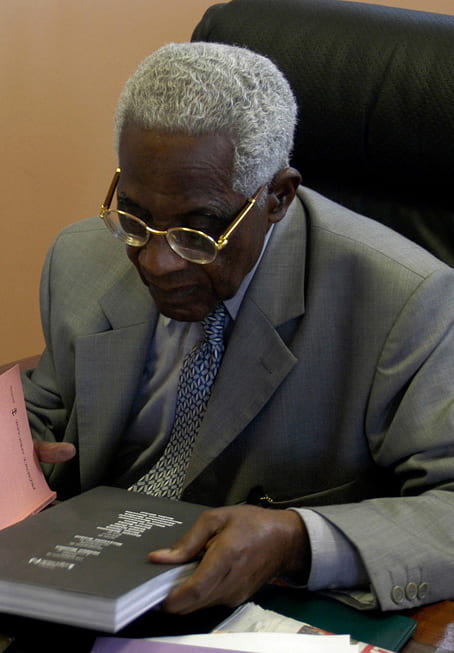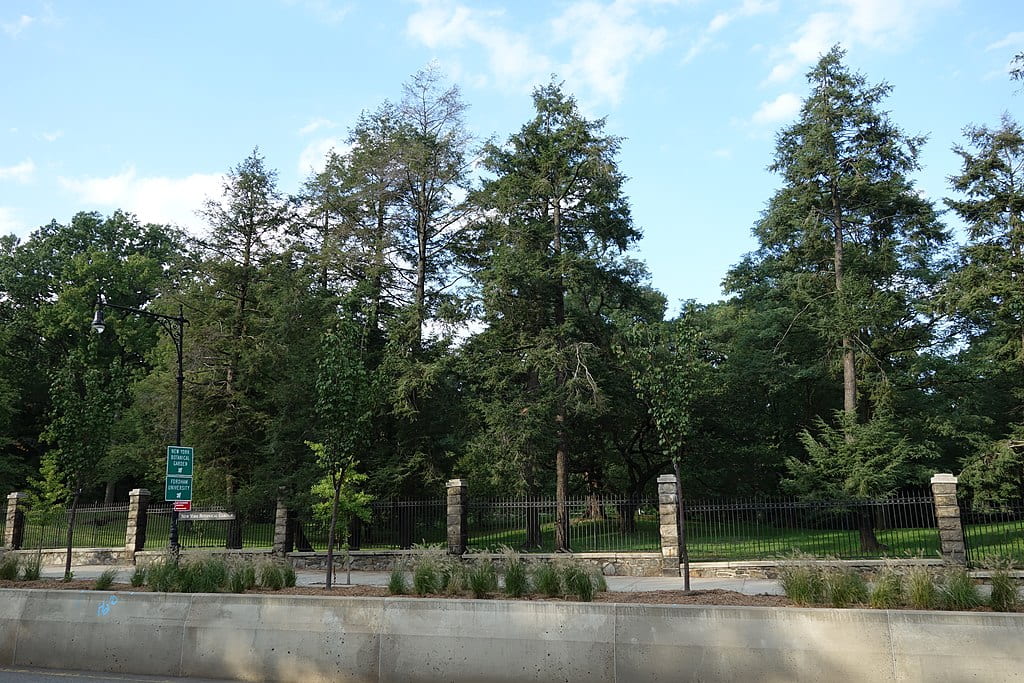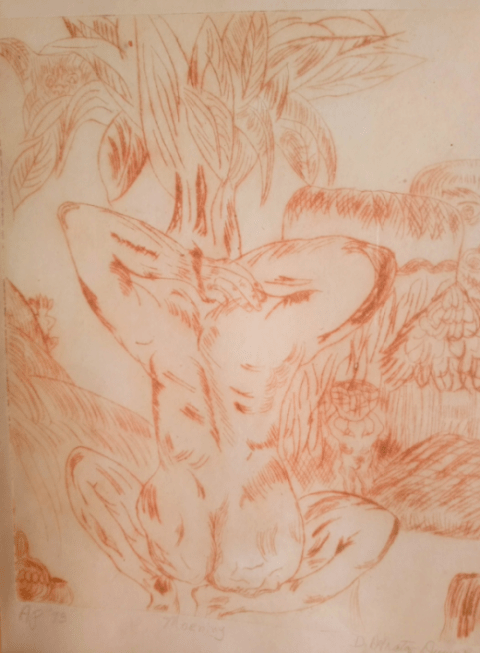“Whoever you value, you exhibit. You can tell who institutions value by what they display”
By Nuala P. Caomhánach and Rashad Bell
On September 9th 2020, five experts discussed botanical museums in the virtual workshop Decolonizing Living Collections sponsored by Science Museum Fridays at New York University (NYU). The interdisciplinary conversation included DePrator, educator, biophiliac, New York Botanical Garden (NYBG) volunteer; Wambui Ippolito, founder of the BIPOC Horticultural Working Group; Rashad Bell, Special Collections Librarian at the LuEsther T. Mertz Library (NYBG); Laura Briscoe, Collections Manager at the William and Lynda Steere Herbarium (NYBG), and Nuala Caomhánach, Ph.D. candidate in the History Department at NYU and visiting scientist at the American Museum of Natural History The following essay was written after the event because the Science Museum Fridays program, organized by Professor Elaine Ayers of the NYU Museum Studies Program, is a safe space for discussion, and thus, not recorded. The questions asked during the session were sent to the participants post-event to answer.
Introduction
Collections are amazing. However, the artifacts–plants, bones, artwork, books– become strangely “less than” once they are placed in a museum. Museum artifacts are claimed to give us a wider scope of the world. However, in attempting to make our world larger, the items become smaller and static, losing their vitality. Their potential as an object projects a world beyond what we are told is limited. Their value is invented, assigned, and a hierarchy created behind hard-to-access closed doors. Division stems from their ascension. “Discovered” and revered by someone outside of that environment (usually white and male) an artifact gets a name and a purpose. Perhaps it already had one–how could we know, how would we know, when active erasure occurred the moment it was “discovered”?

While the wonder of visiting natural history museums will never fail, we should question what or whose “nature” is being presented. Museums have in fact always provided carefully curated, often monolithic, visions of nature. In scientific collection making, the natural world is tailored to the needs of the collectors erasing indigenous knowledge systems along with the support given by indigenous communities to collecting expeditions. These collections impose an implicit exclusivity based on color (white), gender (male), and class (middle to upper). The legacy of museum collections casts a long shadow of conscious intellectual omission. Most research collections are not open to the public, indeed, many visitors are unaware of the types of research that occur in these spaces. Mission statements highlight biodiversity conservation research, diversity programming, and exhibitions but rarely reveal the historical process of scientific authority, the control of meaning making, and intellectual gatekeeping that has and continues to occur since the founding of the museum. The experience of the visitor is edited, shaped, and the objects redacted from their historical roots to present the museum’s expression of that object in its entirety. Cultural institutions, such as botanical gardens and natural history museums, cannot erase their colonial histories, nor expect this work to fall on colleagues from oppressed communities to provide solutions. However, when limiting access and creating barriers are the tools of cultural institutions founded in the colonial period one needs to examine both the passive and active barriers to universal access. Passive or external barriers, such as gates, ticket prices, and a lack of community engagement maintain the existing tension between the elite image of the museum space and those wanting to decolonize these spaces (heralded by the upsurge of political and activist groups) by dismantling the legacy of settler-colonialism, white supremacy, and the heteropatriarchy embedded into language, displays and mission statements. The active or internal barriers –which are more complex and often difficult to pinpoint– emerge through hiring practices, power structures, and institutional gaslighting. The desire to uphold the intellectual high ground through ethically-mindful mission statements masks the daily experience of BIPOC within these spaces–as visitors and as employees. The push for change is sometimes tense, uncomfortable and full of fear. Defining decolonization for any institution can be a struggle. Many people, regardless of their ethnicity, are curious about how a cultural institution will tackle this problem to counter feelings of isolation, anger, exclusion, and powerlessness. To decolonize sounds threatening to the very material natural history museums are created from: objects. But, what does decolonization mean?

Ever since the 1940s when theorists, such as Aimé Césaire and Léopold Sédar Senghor , first articulated the black condition in the world and offered visions of a decolonized world, the meaning of decolonizing has been hotly debated. The Washington Post defines it as “a process that institutions undergo to expand the perspectives they portray beyond those of the dominant cultural group, particularly white colonizers.” In an age of climate change, pandemics, and mass movement of people, tackling the lingering influence of colonialism in botanical museums and acknowledging the presence of other systems of knowledge including the people who hold them is much needed. A person of color is born into a global system that elevates whiteness and requires people of color to behave in particular ways, thus leaving them vulnerable to the ongoing erasure, violence, and exclusion. To decolonize means understanding that “whiteness is not personal, a white person is not whiteness itself; whiteness is institutional.” The social inequalities revealed in “real time” by the COVID-19 pandemic, and the “…increased risk of getting COVID-19 or experiencing severe illness, regardless of age among some racial and ethnic minority groups, including non-Hispanic black persons, Hispanics and Latinos, and American Indians/Alaska Natives” highlight the urgency of addressing the role of cultural institutions within this context. Decolonization is a movement and ideology to acknowledge, examine, challenge, and eliminate the disproportionate legacy of white Euro-American thought located in every corner of society, from educational systems to conservation policy to museum collections.

Decolonization of botanical museums calls for something more subtle, a decolonization of the mind and an openness to really listening and hearing BIPOC. The path to decolonizing botanical spaces does not need “time”1, per se, it needs conscious and mindful acknowledgement to act and create meaningful representation and belonging of historically underrepresented people within the institution. This is not just about repatriating specimens or increasing the number of people of color working across all departments of an institution, although such racial “transformation” is an important and vital part of the process. It means stepping back and examining institutional processes and systems to dismantle the hegemony of Euro-American values and ideas. It means making way for the local philosophies, traditions, and voices that have been slowly excluded and cast aside throughout the history of the institution. Substantial literature from around the world supports the need to change these spaces, take action, and establish review committees with diverse voices around a common goal of decolonization, inclusion, and transparency. This conversation was a first step to recognize how different communities of people sharing space create multi-meaning making.
PART I: Experiencing Museums
Ayers: You’ve been volunteering at the NYBG for almost two decades. What drew you to volunteering at this institution? How does it compare to / differ from the other institutions you volunteer at from the “front lines” of docents actually interacting with the public—the Schomburg Center and the Bronx Zoo?

DePrator: Volunteering is a gift to me because it allows me to give and receive without expecting anything beyond the moment of interaction. For about 17 years I’ve served at NYBG because of the opportunity to thrive in a growing environment…. What surprised me most over the years in doing tours as a Docent is how few people of color strolled the garden; attended shows; came on Members’ Day. I noticed my own reaction of joy when I did have a person of color on my tours. I made intense eye contact with them to acknowledge their presence. In contrast, the Schomburg Center for Research in Black Culture, where I am an usher for the many events staged in the auditorium, the faces always in the majority are people of color. There, the surprise is a white face. The main difference is the audience and programming that attracts me to serve at both places. The Schomburg, differs from NYBG, represent Me, the Diaspora, in a significant way that represents the Community that surrounds the building, Harlem, the renown center of Black Culture.
Ayers: You have worked and taught at major institutions like the NYBG, but you recently founded the BIPOC Horticultural Working Group as a way of extended support to marginalized employees of these institutions. Can you describe the group in more detail and share why you felt that it was necessary to work outside of these institutions?
Ippolito: I am an immigrant. My horticulture school didn’t offer courses on Indigenous, African American, Latinx or Asian horticulture systems. I embarked on my own research and shared my findings – through museum programs, lectures and social media, and invited POC who are masters in their respective fields. POC want to hear our own stories and helm our own exhibitions.
I formed the BIPOC Hort Group which consists of African American, African, Asian, Latinx and Caribbean members and asked if we should open the group up to white allies. The unanimous answer was no, that the group should be BIPOC only as it is meant for support and advocacy for us, by us. The group is a safe space. I made it clear that POC is a qualifier, not a unifier; because some non-Black communities represented in the membership exhibit anti-Black behavior, and benefit from Black toil unjustly. Non-Black members are expected to advocate for Black people, just as Black people will advocate for all. In order for the space to be safe, it was important for us to acknowledge this going forward, and for those who may have reaped the benefits of white-adjacency to be aware that this is no hidden secret; and for members who may have bought into anti-Black tropes to understand that they may have arrived at the BIPOC Hort Group with baggage.
Ayers: One of the themes that has arisen over the course of this conversation has been about feeling like an “outsider” within these institutions—as a Black scholar, an immigrant, a fellow from a university, an activist, etc. How have you navigated your own drives and motivations towards the type of work that you want to do with the practical limitations and resources of an institution?
Bell: I take strong issue with the power structures of institutions especially coming from a background of nonprofit and public library work. I tend to be more community minded than the institution as I have come to notice that the end goal is not to provide access, advocate, highlight, or whatever generic words are in mission statements but to profit. Institutions tend to create more barriers than they break down, whether they are literally the fences around the garden, financial (ticket prices), or ideological (beautiful facilities in poor neighborhoods/not reflecting nor representing the neighborhoods they inhabit). If the idea is to bring art, culture, etc. to the masses, these actions are incredibly counterintuitive, and institutions end up creating their own cultural feedback loop reinforcing exclusion and elitism while purporting to do the opposite. I have not figured out how to navigate these environments and am often discouraged. I am often told that I have to learn how to “play the game.” While I understand the importance of being able to adapt and adjust to different situations, these environments weren’t made for me and playing the game usually means participating in structures that don’t have my best interests in mind. Why would I play a game when my role is to lose? There are different ways.
Ayers: How have you seen the NYBG change over the course of your time there? You’re in a unique position of having been there for longer than any of our other panelists. How have things like staffing, exhibitions, and public programming shifted during your tenure?
DePrator: The layout of NYBG is such that the visitor literally enters admissions and progresses to the grand stages of the Garden, the Conservatory and the Library. At least 99% of those greeting them are people of color. Dare say anywhere in the garden, most are working in service of the public. I notice that the most important position, first contact with the public, are people representing the neighborhood and are mostly the minimum wage workers. The Administration has gained some “color” over my tenure. I have volunteered in those programs that have become popular with the community, of recent. When these events occur, the visitors are overwhelmingly reflective of the Bronx, the surrounding population. Noticeably, the special exhibitions draw more of white audiences. Recent exhibitions that have focused on cultural icons, traditions, healings favored by the local community and global people of color are highly attended by those nationalities. For example, shows focusing on Spanish icons, Asian traditions. In my time there has never been a show of an African or African American artist. Ergo, attendance is international for those favoured shows. I would love to lead a tour of such a rich and multifaceted African Diaspora.
***
Continue reading!
***
The second part of this conversation, featuring
“Black Botany: The Nature of Black Experience”
and “The Limits of Being in the Institution,”
can be found here.
** Title quote was stated by DePrator during the Decolonizing Living Collections Virtual workshop, on September 9th 2020. Permission granted by speaker.
1. Cultural institutions tend to argue in the face of change that they need more time, but the irony of that statement needs to be probed deeper. “Time is also racialized, such that racial/ethnic minorities often have less free time and suffer a time penalty in multiple facets of life. Such penalties manifest in problems such as greater time in prison or more time spent accessing services.” https://www.ncbi.nlm.nih.gov/pmc/articles/PMC6356137/
Featured Image: Morning by DePrator. Detail.




February 18, 2022 at 7:19 pm
.. without any intention of doing so, I began the process of decolonizing the natural history of landfowl. Naively, I assumed that individuals with shared common interests in species like the Lady Amherst’s pheasant (Chrysolophus amheristae), Reeves’s pheasant (Syrmaticus reevesi), Temminick’s tragopan (Tragopan temminicki) etc etc etc would appreciate narratives honed from indigenous voices. The richness of their perspective, indigenous cultures, when describing an unusual species, such as one of these exquisite fowl, is Incalculable.
Instead I began experiencing unambiguous expressions of blatant prejudice and a general shut out. Not only was I deconstructing problematic natural history narratives – I’m also of African descent.
Here we have dozens of species named after western colonialists in danger of permanent extinction. The World Pheasant Association is apparently diametrically opposed to ending their colonization of the Galliformes – even if that is what is required to place the conservation of these species back into the hands of peoples ghat share a habitat/continent.
I’ve become increasingly frustrated with the indelible stain of White supremacist ideology in natural history.